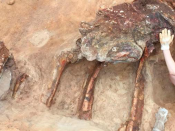Duarte Barral
CEDOC, UNL, Lisboa
The “Epidermal-Melanin Unit” comprises the functional complex in which melanocytes and keratinocytes co-operate in a synergistic fashion to maintain skin pigmentation. The transfer of specialized lysosome-related organelles, called melanosomes, from donor melanocytes to recipient keratinocytes and subsequent redistribution to the supra-nuclear area is a critical process in skin pigmentation and photo-protection against ultra-violet damage. However, the molecular mechanism underlying intercellular transfer of melanin remains controversial. Using co-cultures of melanocytes and keratinocytes we found that keratinocytes stimulate melanin release and transfer, and that depletion of the small GTPase Rab11b or its effector the exocyst leads to a decrease in melanin exocytosis. To further investigate the melanin transfer process, we used keratinocytes fed with melanosomes and found that melanin is taken up by keratinocytes and accumulates in lysosome-like structures that resemble the physiological supra-nuclear cap observed in human skin. Taken together, our observations suggest that the predominant mechanism of melanin transfer is keratinocyte-induced exocytosis in a Rab11b/exocystdependent manner, followed by endocytosis by keratinocytes.





















